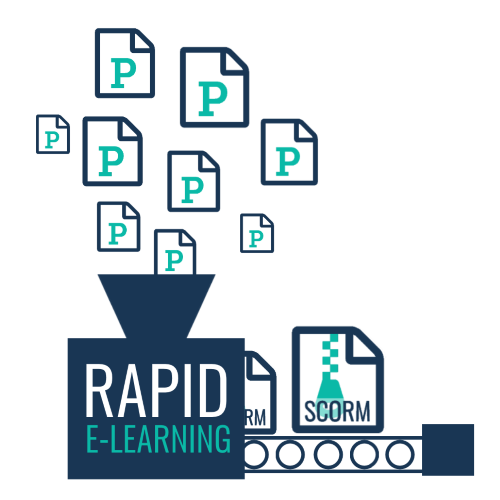 Generally speaking, employees aren’t hired to spend all day reading staff manuals, watching instructional videos and completing eLearning units. If that were the case, the learning manager’s job would be a fairly easy one.
Generally speaking, employees aren’t hired to spend all day reading staff manuals, watching instructional videos and completing eLearning units. If that were the case, the learning manager’s job would be a fairly easy one.
The trouble with being a learning manager is that the training material, whatever form it takes, is just another thing that the employee needs to do besides fulfilling the role they’re paid to fulfil. In all likelihood their jobs are already challenging enough, so it’s easy to see how they might view their training material as little more than a distraction.
Sure, the formal element of their training only makes up 10% of everything they learn at work, but while they’re taking it, you might as well make every second of their time count. It doesn’t help that eLearning (and training material in general) is more often than not rather dull, dry and boring.
Learning Games to the Rescue!

Learning games are different from the typical eLearning units you’ve grown to merely tolerate. Instead of a passive, click-through slideshow, the experience is more interactive and it makes use of gamification – the secret sauce of engagement.
Gamification is the use of game mechanics outside of a gaming context. Why would you want to do this? Well, if you’ve ever played a game in your life, you might have noticed how difficult it was to drag yourself away from it. You might have looked at the clock and realised that, without your noticing it, hours had slipped past.
Learning games employ the same mind-hacks (or game mechanics) that games make use of. These sneaky little tricks take advantage of odd psychological quirks of the human mind like:
The desire for reward
Badges are virtual rewards that can be attached to various actions within the learning game. This can be anything from watching a video to answering a question correctly.
The need for recognition or acknowledgement
Along with badges, the learner also receives congratulatory messages as they proceed through the game. Although it’s no substitute for the real thing – it still adds to the engagement factor!
The urge to complete tasks
Even if it’s something as simple as filling in a progress bar, people will always strive to complete unfinished tasks. This mainstay of gamification is what keeps learners engaged with tasks even when it’s time to go home!
These are just a few of the benefits to game-based learning that affect the learners themselves. Aside from the engagement advantages, learning games can also make the course builders’ lives a lot easier.

 If you use a game-based eLearning authoring tool, you will generally start a project by selecting a game template. Once you have this, you’ve got a solid framework around which to build your unit. Of course, you should ideally put some thought into the learning journey, but when time is against you, every little helps!
If you use a game-based eLearning authoring tool, you will generally start a project by selecting a game template. Once you have this, you’ve got a solid framework around which to build your unit. Of course, you should ideally put some thought into the learning journey, but when time is against you, every little helps!
In this way, learning games are particularly useful for a rapid eLearning solution. If your authoring tool also has collaborative features, every subject matter expert in your company can add questions to a quiz bank whenever they feel like it. Once you have a good selection of questions, it’s a matter of merely slotting them into a game template and exporting the unit to your LMS.
If you want to train your employees without wasting their time (and yours), learning games might just be the solution you’ve been looking for. Genie is a content authoring tool that’s designed specifically for creating learning games quickly and easily.
Try Genie out for yourself with a free 30-day trial. Just click the image below and create something awesome!









